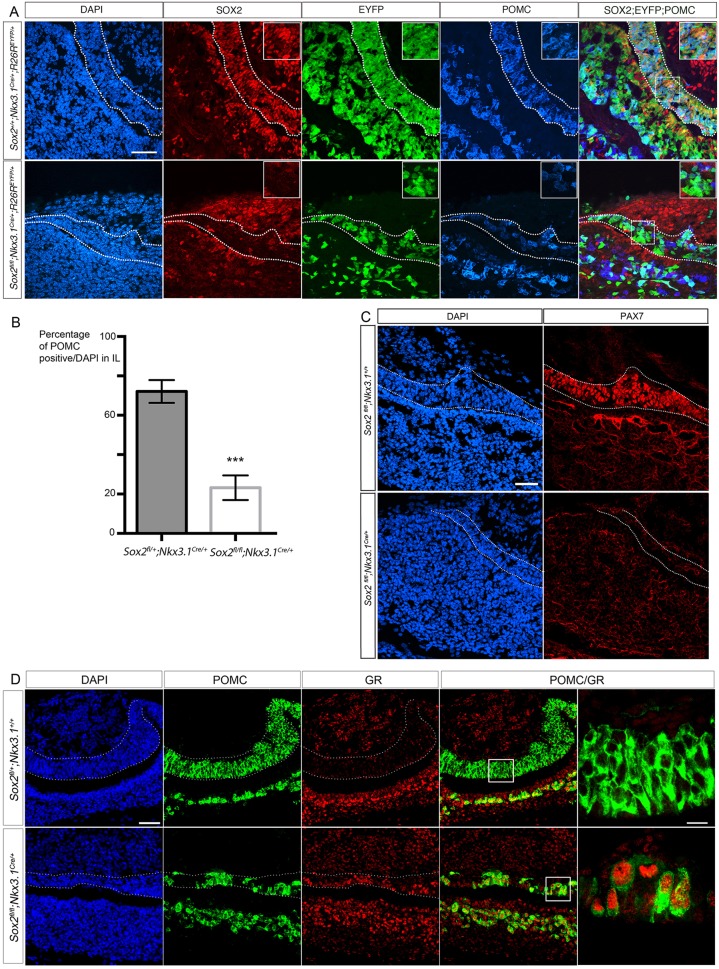Fig. 4.
Sox2 deletion in IL progenitors results in reduction of POMC-positive cells, complete downregulation of PAX7, and ectopic differentiation of corticotrophs. (A) Immunofluorescence for SOX2, eYFP and POMC at 18.5 dpc in Nkx3.1Cre mutants. POMC is present in SOX2Low cells in the IL of Sox2+/+;Nkx3.1Cre/+;R26ReYFP/+ embryos. In mutant Sox2fl/fl;Nkx3.1Cre/+;R26ReYFP/+ embryos, SOX2 is essentially lost and the number of POMC-positive cells reduced. (B) Percentage of POMC-positive cells in the IL of Sox2fl/fl;Nkx3.1Cre/+ embryos at 18.5 dpc (23.2±6.2% of DAPI-positive cells, n=3), is significantly lower (***P=0.0008) than in heterozygous Sox2fl/+;Nkx3.1Cre/+ embryos (72.1±5.8%, n=3). Results presented as mean±s.d. (C) Immunofluorescence for PAX7 at 18.5 dpc. PAX7 is expressed exclusively in the IL in Sox2fl/+;Nkx3.1+/+ pituitaries. Expression is dramatically downregulated in Sox2fl/fl;Nkx3.1Cre/+ IL. (D) Immunofluorescence for POMC and glucocorticoid receptor (GR), at 18.5 dpc in Nkx3.1Cre mutants. GR is normally present in POMC-positive corticotrophs in AL, but not in POMC-positive IL melanotrophs, as observed in Sox2fl/+;Nkx3.1Cre/+ pituitaries. In mutant Sox2fl/fl;Nkx3.1Cre/+ pituitaries, GR is ectopically present in the IL POMC-positive cells, demonstrating that these are in fact corticotrophs. Scale bars: 50 μm in A,C,D; 5 μm for magnifications in D. IL is outlined.

